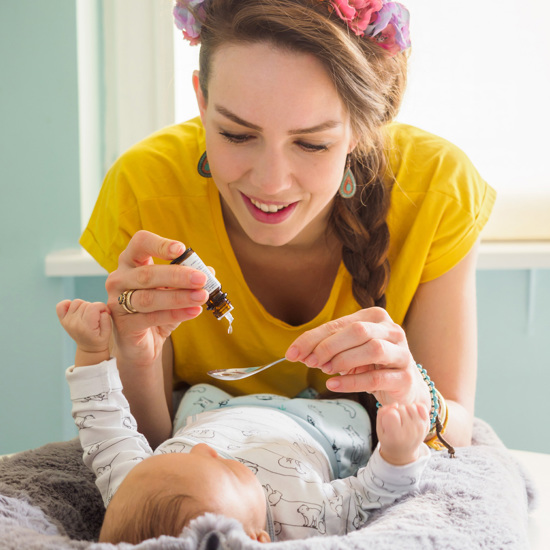How will I know if my baby is ready for solids?
If baby is showing signs that he is ready and that he needs more food, it may be time to start him on solids. Signs that your baby is ready include good head control, the ability to sit up and bend forwards, the ability to grasp food and move it towards his mouth, and the ability to signal that he is full, e.g. by turning his head away.
Signs that your baby now needs solid food are low weight gain and/or that baby seems hungry even after long feeds. Most infants are ready for solids at around six months. Solids should not be given until four months of age. Until this age, your baby’s digestive system and kidneys will not be developed enough to digest anything other than breast milk/infant formula.
How do I start my baby on solids?
Introducing your baby to solid food is the slow and gradual process sometimes called ‘weaning’ or ‘complementary feeding’. The amount of solids you give baby should be baby-led and increased in response to baby’s needs and signals. Start with tiny amounts of solids. The first few tastes might be just a teaspoonful. The amount can then be increased gradually. Let your child taste a wide variety of solid foods. When baby is about six months, two or three meals of solid food a day will be appropriate. Once baby is nine months, she can have three to four meals of solids a day. If necessary, one or two snacks between meals can be given as well. Breast milk or infant formula is still the most important food for the whole of baby’s first year. Breastfeeding as part of a meal will keep up your milk production.
How do I encourage my child to enjoy a variety of foods?
From 6-12 months, your baby will be learning to eat solids. Infants who become used to food with different textures and flavours as soon as they start eating solids will be less ‘fussy’ later in childhood. The texture should be adapted to your child’s age and development. The aim is for your child to learn to eat unaided and have a good attitude to food and meals. Offer your little one a wide variety of vegetables and fruit. Vegetables and fruit contain important vitamins. If you continue to offer the same foods time after time, your child will eventually learn to like them. Vegetables can be served raw, boiled or finely chopped. Give your child soft chunks of food. Avoid small, hard chunks which could get stuck in her airways. Encourage your child to use all her senses during mealtimes.
Baby-led weaning – should baby eat unaided?
Your baby should start eating solids at about six months. Encourage your little one to actively participate in meals and use her senses. Your child should get to see, smell, feel and taste her food. Take your time over meals and create a pleasant and relaxed atmosphere. Your child will get many different impressions and learn a lot. Let baby eat finger foods unaided while being spoon-fed. This will ensure that baby gets what she needs.

Supplements for infants
Breastfed babies should be given vitamin D supplements. Babies who are given infant formula do not need supplements.
Illustration: Ole Walter Jacobsen - Helsedirektoratet